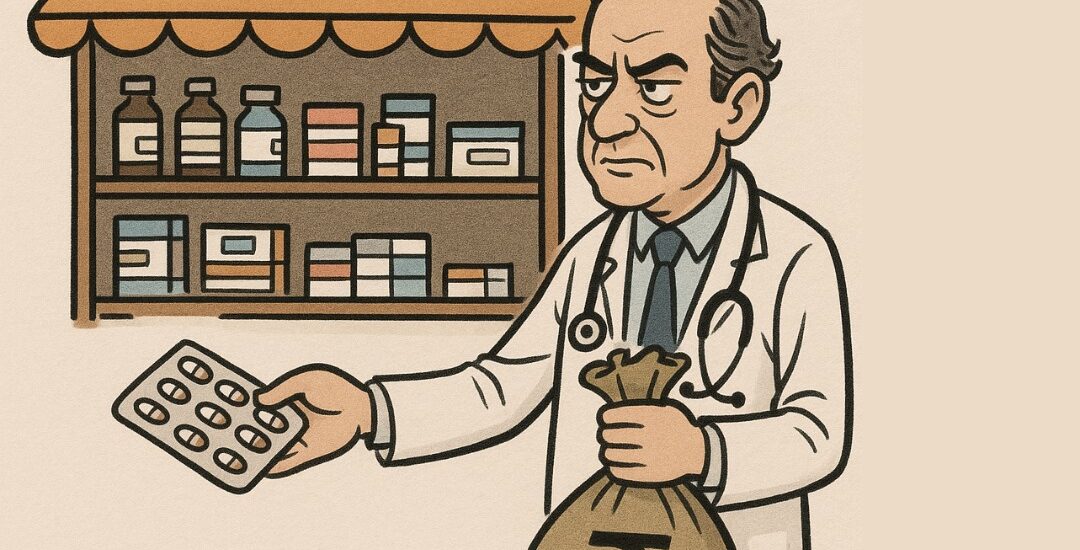Globally healthcare in countries where universal access with equity prevails, health is regarded as a public good and gets adequate tax resources from the government budget and there is no burden out of pocket at the point of delivery of care. Such is the situation across all OECD countries (exception being USA), most middle-income countries of Latin America, Asia and Africa as well as many low-income countries. In fact, USA with a market of 18% of GDP spending on healthcare which depends on private health insurance as a mode of financing healthcare has 35-40 million Americans who are denied access to healthcare as they cannot afford insurance premiums. In sharp contrast Canada across the northern border spends less than 8% of its GDP on public healthcare with much better health outcomes because its healthcare is delivered through a National Health System. And in even a sharper contrast Cuba across its southern border spends $1200 per capita for healthcare with much better health outcomes against USA’s expenditure of $14000 per capita. Further in India which is part of the BRICS alliance all the BRICS countries have much higher investment and spending in public healthcare than India and consequently more robust health outcomes.
In India Healthcare is predominantly provided by the private sector, whether out-patient or Inpatient services. National Sample Survey tells us that over 80% of outpatient care in India is provided by the private sector and in case of inpatient care it is over 65%. For the latter even in the public funded health insurance scheme, the AB-PMJAY, 75% of cases are treated in private hospitals with huge public resources subsidizing private healthcare. Further even in public health facilities there are user fees charged to patients to access healthcare. So, India’s healthcare system is completely entrenched in the marketplace.
Eighty five percent of all available doctors in India work in the private health sector. Individual practitioners like GPs and Consultants operate in a completely unregulated environment. No standard protocols for treatment are followed, there is no referral system, patients increasingly approach specialists directly, drug prescription is unregulated and unaudited, diagnostic industry operates independent of medical practitioners by approaching “patients” directly and offering packages which often include unnecessary tests, there is a wide array of malpractices including cut practice, unnecessary diagnostic tests and procedures and imaging, and even unnecessary surgeries (C-section, Hysterectomies, Appendicitis etc.). All this happens because in the marketplace health care is fueled by a supply-induced demand created by health professionals as mentioned above and not on the basis of rational medical practice. The size of the private health market in India is around 4% of its GDP.
So, the result is that private healthcare has become a ‘dhanda’ like a baniya ki dukaan and is no longer a profession. Market dictates the way healthcare is delivered and marketing practices of pharma industry and the diagnostics industry promotes such irrational practice of medicine towards maximizing profiteering. Not only those qualified practice medicine but a huge array of unqualified persons are also making a living out of medical practice as there is very poor regulation of medical practice.
The public health sector on the other hand is very small, is under-funded, faces huge deficits including large scale vacancies of doctors, nurses and other paramedic staff. In fact vacancies of specialists of various kinds is to the extent of 70-80% of sanctioned positions which in itself is abysmally low given the size of India’s population. Its not that India does not produce enough doctors. In India each year over 100000 MBBS doctors and 60000 post-graduates are enrolled. In addition we have over 60000 AYUSH doctors being produced each year. This is more than enough and can provide 5 doctors per PHC across the country. But the problem is that the public health system is able to attract less than 15% of the doctor workforce in the country. The public health sector accounts for only 1.2% of India’s GDP and this places India’s commitment to healthcare in the bottom 10 countries globally. The National Health policy since 1982 has had a goal of committing 2.5 to 3% of GDP for public healthcare but we are far away from this goal.
The State in India has allowed private markets to flourish across the country by neglecting investment in public health services. Most states spend 3 to 4% of their budgets on health when the National Health Policy mandates at least 8%. Presently the percapita public health expenditure in India is Rs 2400. In sharp contrast for Central Government employees and honorable members of Parliament the CGHS spends Rs 16500 per capita and for the armed forces Rs 17000 per capita. Similarly state government employees and MLAs get huge health benefits but those who elect them are ignored and neglected. This is clear discrimination in allocation of healthcare resources – those who pay taxes get ignored and those who live off taxes get exemplary healthcare benefits from those taxes. However, there are a few states in India like, Mizoram, Arunachala Pradesh, Puducherry, Goa, Sikkim, Jammu and Kashmir, Himachal Pradesh which spend over Rs 5000 per capita and consequently have robust health indicators. In fact these states are a good example for other states to emulate and the common feature of these states is that they have a very weak private health sector and hence public investment in healthcare is high. So, clearly these states have insulated healthcare from the markets by having a robust public health system that provides near universal access to its citizens.
Can this be emulated across the country? Yes. We have the backing of the National Health policy to commit at least 2.5% of GDP or 8% of the budget to healthcare. If this happens then the average public health expenditure would get pushed to over Rs 5000 per capita, making resources available to expand the public health system and equip it with the required human resources and other inputs. Today there are huge deficits within the public health system – inadequate infrastructure, unfilled posts of doctors, poor maintenance of facilities, inadequate supplies of drugs and diagnostics and above all very low budgetary commitments to health. To begin with raising the budget to 2.5% of GDP will make available required resources to expand the infrastructure, optimize supplies and most importantly provide attractive remuneration to doctors and nurses to join the public health system. For instance in many countries across the World medical graduates and post graduates have to engage in compulsory public service or what is also called supervised practice for 3 to 5 years before they get a license to practice independently. As indicated above we do not have shortage in production of doctors and specialists so engaging them through compulsory public service will provide more than enough of the human resources needed. All that is needed is a strong political will to do this and with a strengthened public health system the healthcare market will be reined in to support the public health system.
To make the above possible firstly a legal mandate on right to healthcare or declaring health as a public good needs to be done. Rajasthan has taken the lead and legislated this though presently there are implementation hurdles with the regime change. Next a strong legislation to regulate the private health sector needs to be firmly in place. There is the Clinical Establishment Act to begin with but ironically it has been passed in states which have a weak private sector and there is strong resistance in states which have a strong private health sector. If these two changes happen with a huge political push as happened in Thailand then there is no reason why the shift to a stronger public health system won’t happen. A strengthened public health system is the only guarantee that will insulate healthcare from the marketplace and bring back medical practice by professionals and eliminate the baniya ki dukaan character of the private health sector.








